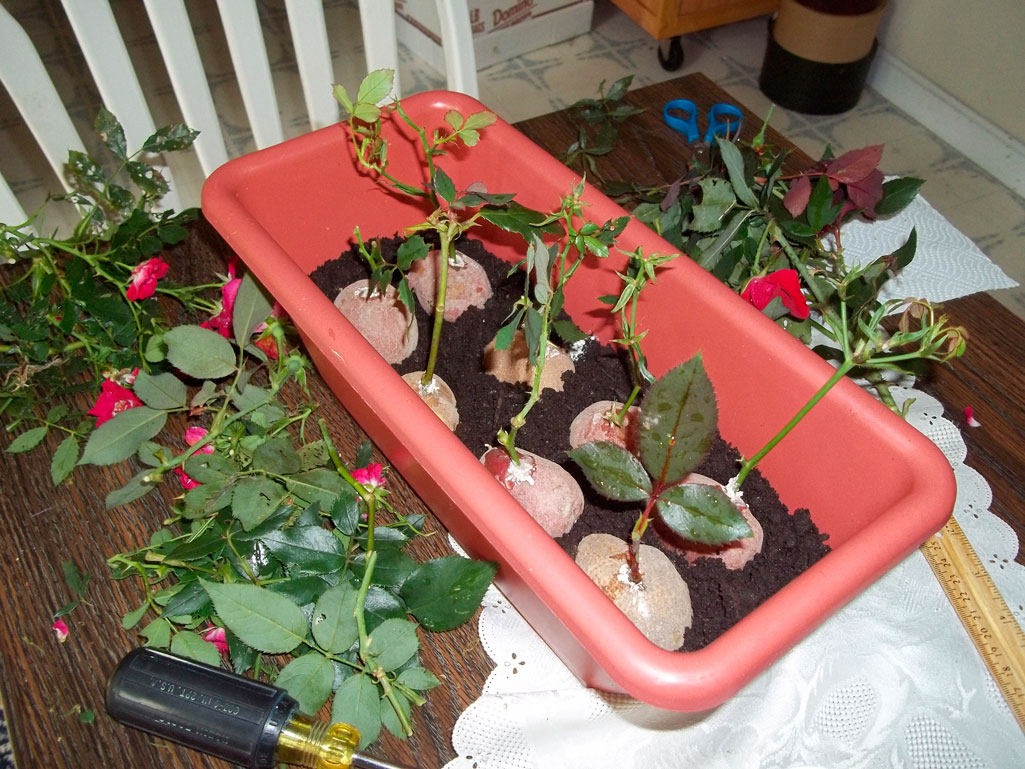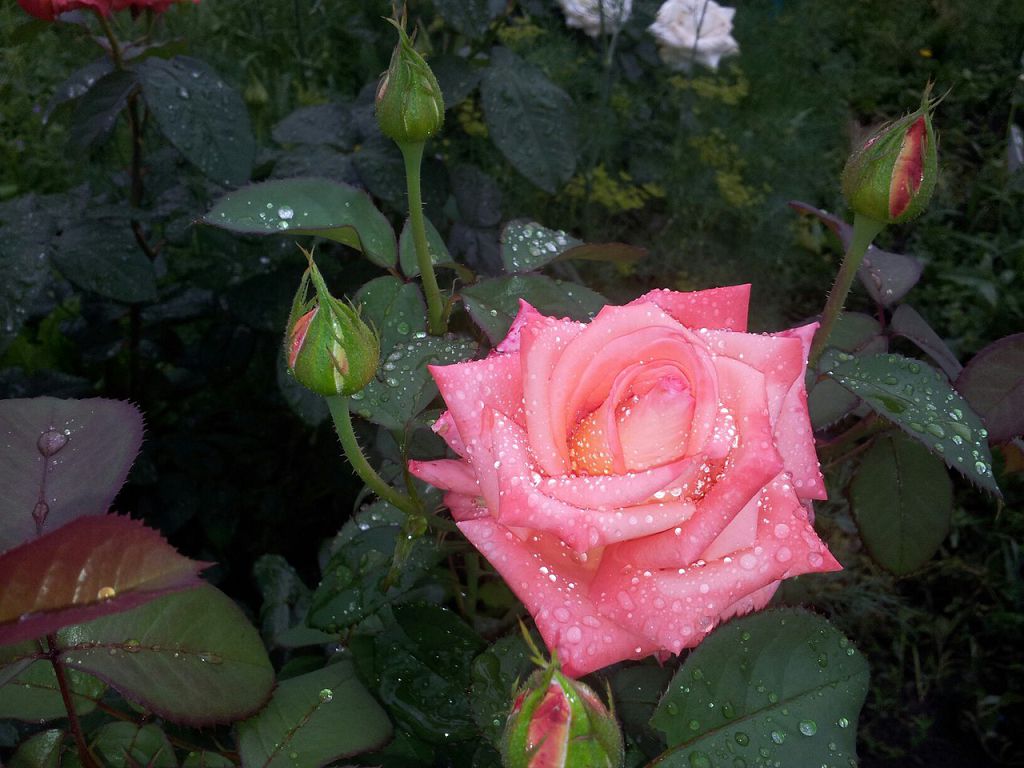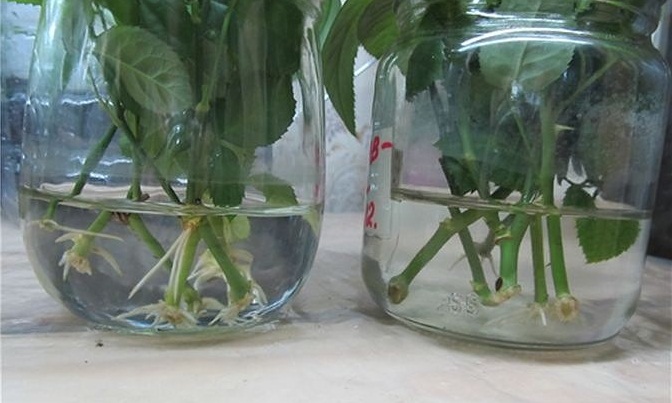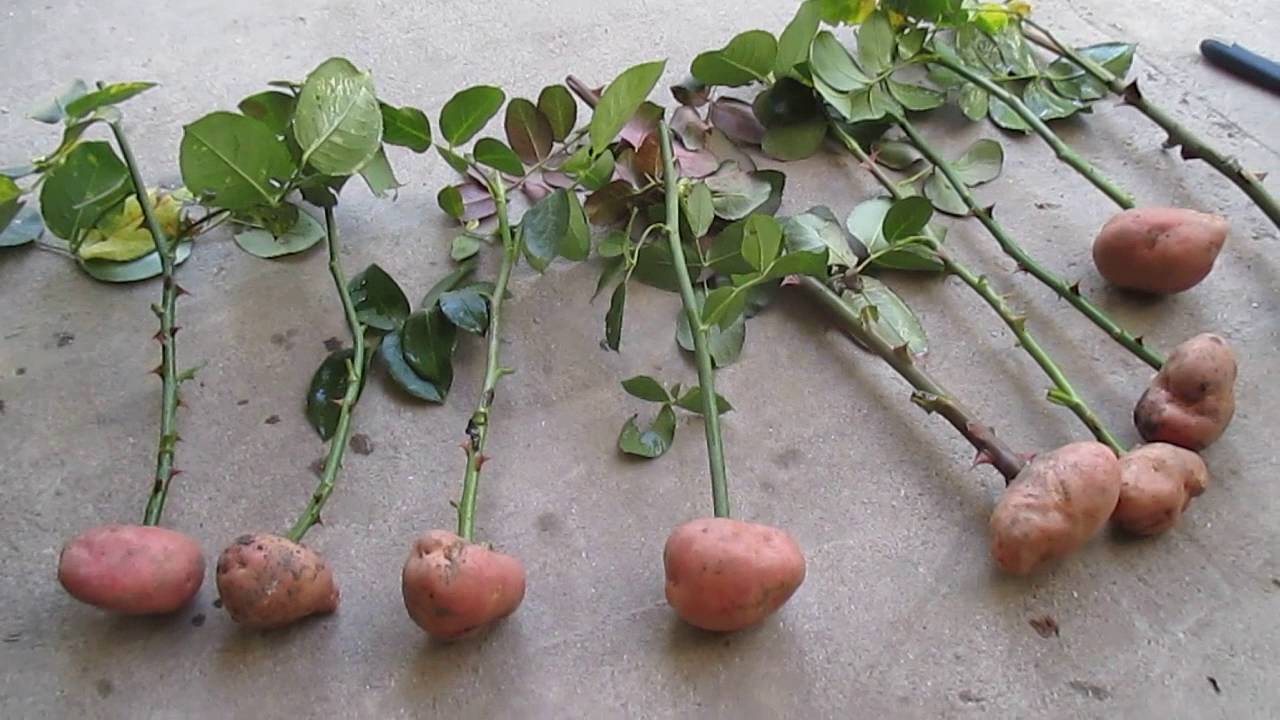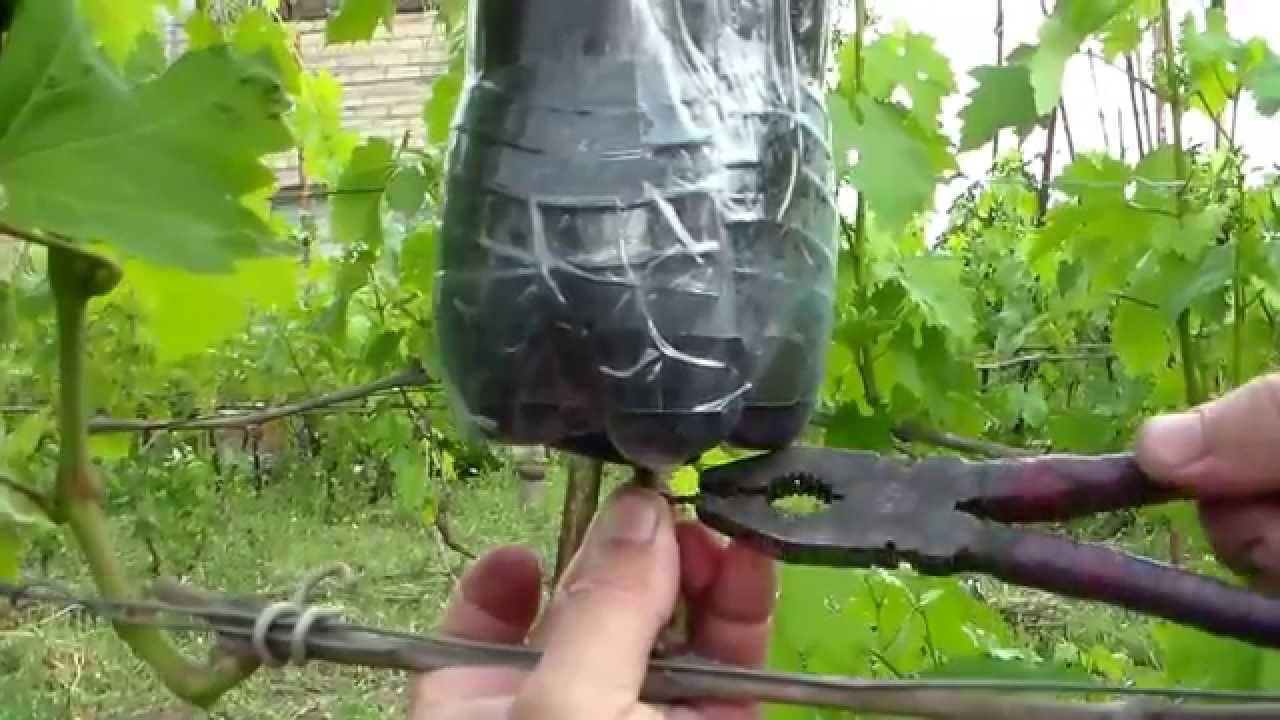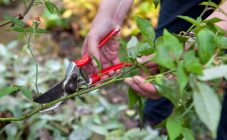Content:
Rose lovers are usually interested in propagating them in the least laborious and inexpensive way. To organize a flower garden on the site without buying new seedlings, there is an option to independently plant the bushes with cuttings. You can achieve a large survival rate by following the rules of the chosen method. Cutting roses from a presented bouquet often helps to preserve the most beautiful flowers.
Roses breeding methods
Like many other plants, cultivation of rose bushes is possible by rooting or grafting in any part of them, planting seeds. All seeds purchased and taken from ripe fruits are suitable for germination. The seed is placed in the cool and then planted in the soil.
During vegetative propagation, the new plant separates and releases its own roots. For this, one of the options is selected:
- rooting by layering or offspring;
- grafting;
- division of the bush.
Layers are the lower shoots of the bush. In early spring, they are cleaned of leaves, incised, placed in a hole and covered with earth. After six months, the branch is separated and transplanted.
The offspring grow on the edges of the main plant, feeding on its roots in the first year. In the spring they are separated, since by this time they have grown their own roots.
Propagation of roses by cuttings consists in cutting off parts of the shoots, which are created favorable conditions for the formation of roots and placed in the soil.
A heavily overgrown rose bush is dug up, the length of the processes is reduced. It is divided into parts that have their own roots and are easy to plant.
By grafting, a peephole from a rose cut is inserted into an incision on the stem of another plant (related, usually a rose hip), so that over time it grows and sprouts. The grafted garden flowers slightly change their properties, become more wild.
Site preparation and planting material
Separation of cuttings from mature shrubs is carried out in summer (early July) and late autumn (late October). The subsequent preparatory work, the period of planting in open ground, depends on the season. Preferably morning or evening.
Choosing the right plants, planting sites, following the instructions on how to cut roses are the key to successful rooting. For development, seedlings need a lighted area with a slight shadow from the burning sun's rays.
Only strong, healthy, undamaged bushes are suitable for propagation. Ideal shoots for cuttings are green, of medium thickness (about 5 mm), flexible or slightly hardened. It is good if the thorns break off easily, there are no blossoming flowers. Thick root parts are not taken, as are young thin tops.
Roughly the same requirements apply to donated flowers that you want to keep. If the grower already imagines how he will propagate roses by cuttings, dividing their stems, he will cope with this task.The main thing is that the bouquet is fresh, therefore, if it has stood in the vase for 3-4 days, then the sections of the stems are unlikely to take root.
As cuttings, the middle of the stems is cut into pieces having a length of 15-20 cm and 3-5 buds. The upper straight cut should be 2 cm above the last bud, the lower oblique (45 ° slope) - just below the first. All the thorns break off.
Processing shoots separated in June-July
In cuttings, the lower leaves are cut off, the rest are shortened by more than half. The top of the sprouts is smeared with potassium permanganate, melted wax. The lower cut is lowered for 1 day in a solution of a root formation stimulator. The same effect will give 20 drops of aloe juice or 1 teaspoon of honey, mixed in 1 tbsp. clean water.
Storing cuttings in winter
In autumn, you can get much more planting material than in summer. August is the time for feeding, which gives an impetus to the formation of new shoots, which are just gaining strength by October.
The cut stems of roses should be stripped of all leaves. If the decision is made to plant them in already warmed soil, conditions must be created to preserve them during the winter months. It is cool and constant humidity.
The cuttings are wrapped in wet paper, tied in a bag and placed in the refrigerator on the bottom shelf, or half buried in the substrate at an angle. The box with the contents is covered with foil and put away in a cool place. In the spring, the material is carefully removed and seated.
Planting substrate
For rooting plants to develop well, the soil must be crumbly so that oxygen can circulate. Therefore, peat or turf is used with the addition of sand, leafy earth, ash, humus.
The soil mixture is watered with a pale pink manganese solution so that microbes do not multiply in it. Depressions in the ground, containers prepared for planting are filled with it. On top, another layer of sand of 3 cm is poured.The beds are made up to 15 cm high.
Rooting a rose from a cutting
The availability of different ways to stimulate root growth gives room for experimentation. Placing the cut stems outdoors is most convenient, but some people prefer to root cuttings before planting them.
Planting in soil
Cuttings cut in summer can be placed in a rooting substrate immediately after processing where they are supposed to be grown further. Landing is done at a depth of less than 2 cm at an angle of 45 °. The lower bud should be in the sand, but not touch the peat. A distance of more than 7 cm is needed between plants.
Watered seedlings are covered with glass jars, plastic bottles, as they require a temperature of 20-25 ° C during the day and 18 ° C at night. Shelters are temporarily removed after 2 weeks for ventilation. In total, they need to be kept for 1-2 weeks, then the banks can be removed. Step-by-step instructions for planting cuttings prescribe frequent watering in small portions, spraying, and the use of dressings.
For the winter, you can leave young roses outside, creating a shelter from frost - containers sprinkled with leaves, straw. Or dig them out in September with a piece of soil and move them to a cold, ventilated basement until spring.
When planting in spring, cuttings should also be protected from frost. They are covered with foil, glass jars, until the soil is sufficiently warmed up.
Settling in water
Cuttings of some varieties of roses (for example, dwarf roses) can be rooted in containers with clean boiled water. They are placed in a warm, bright place.Add liquid to a level of 2.5 cm.
There are several secrets to speed up the root formation process:
- use dark glass dishes;
- add a couple of drops of aloe juice or a growth stimulant to the water;
- cover the cuttings with transparent polyethylene with small holes;
- place a container under the lamp.
After the roots grow up to 1 cm, the plants are planted on the site. The disadvantage of the method should be taken into account - the lack of oxygen for the development of a strong root system.
Rooting in potato tubers
Planting is carried out in the spring. It is necessary to make a groove for it up to 15 cm in depth, fill it by a third with river sand. All the eyes of the selected tubers are removed and cuttings of roses are stuck into them. Potatoes are laid out on the sand with an interval of 15 cm, buried. A third of the length of the plants should remain on the surface.
A favorable temperature is created by installing glass jars. The lower part of the cuttings is supplied with moisture and starch from the potatoes and is kept warm. The first month requires frequent watering with weekly sugar additions, but no fertilization.
Germination of roots in a bag
Nutrients are poured into a plastic bag: substrate, moss soaked in aloe juice. Cuttings, which are supposed to be rooted, are stuck into the resulting mass at an angle. Then the bag is inflated, tied tightly and hung on the window. After about a month, the rooted shoots can be planted outside.
Aerial cuttings
The method by which the shoot is detached after rooting is widely known. Preparation for this process of propagation of roses by cuttings consists in filling a plastic bottle cut along the length of the nutrient medium.
A large branch is selected. With a knife, the peel is widely cut from it in a circle below the top by 20-25 cm. A root formation stimulator is added to this area, a bottle wrapped in foil from the sun's rays is put on and fixed.
After a month, the container is removed, the cutting with roots is cut from the bush and deposited.
Tips from experienced florists and gardeners
With a lack of practical experience in how to properly cut roses, it is advisable to choose climate-resistant varieties. Roses with flexible, creeping or drooping shoots, dwarf species are most likely to take root. Oddly enough, the rooting of roses depends on the color of their buds: reds and pinks germinate better than yellow, white ones.
Florists give this advice: the bushes selected for grafting should not be fed with nitrogen fertilizers. On the eve of pruning, they should be watered.
The favorite method of cuttings roses can be mastered even by an inexperienced summer resident. Everyone can create a rose garden on the site without much money. You need a detailed study of the issue, painstaking work, time and patience, but pride in the result of your own work will cover everything.
